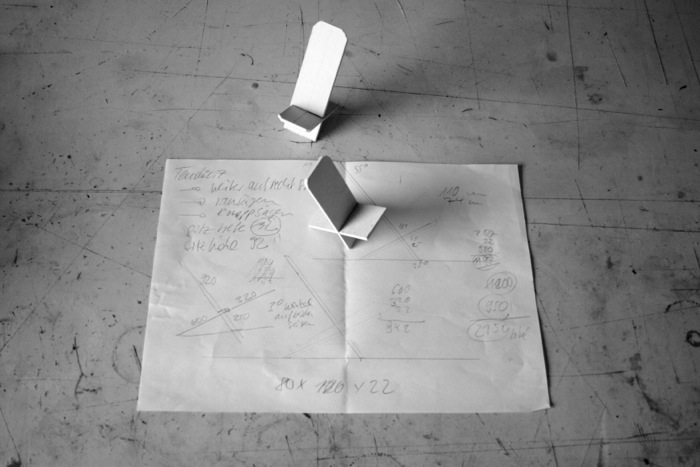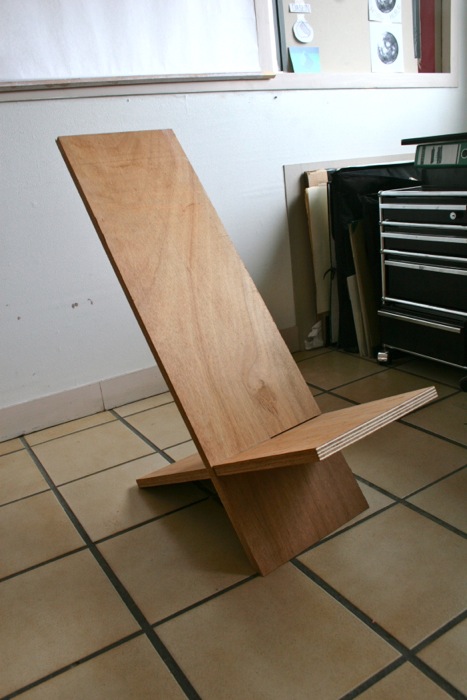
As of late I have been staying in my atelier a lot. In-between my work on various projects I like to relax, and do so by sifting throught magazines and by reading. In many ways my reading informs and stimulates my thinking and working and therefore this research is an integral part to my creative process. Up until now I did not have a suitable seating-accommodation to facilitate my reading-habbit.
I thought this to be a perfect opportunity to do some woodwork, something I had my mind set on for some time. I was in need of a lounging chair — a perfect design and craft study. I gave myself the constraints of limited time and literally no budget as much as my basic knowledge of woodworking techniques, something that I am hoping to improve with projects of that kind.
After considering and sketching out some ideas, I remembered having once sat on a so-called african chair. At the time I had been surprised by the apparent simplicity of the design, basically two boards crossed (there is different ways to do that), which makes the chair foldable. Most importantly, I had been surprised by the comfort this rudimentary construct provided. Therfore I set my mind on following that design and on building an african-type chair.
It did not take me long — to comprehend that the undertaking of my mission wasn’t all that easy. Instantly questions of ergonomics — the design characteristics of an object that is supposed to suit human properties — arose. All dimensions and angles had to be specified, that is if I wanted to plan out my project in advance and specified according to my body and its comfort-zones. This made up for quite some variables. I started taking measures of myself and quickly got frustrated with that. So I resorted to drafting some plans thereby relying on my intuition to find the angles that »looked right« on paper. This method I deemed interesting as I wondered wether I could trust my judgements based on two-dimensional appearance. After all we all have a lifetime of sitting experience and therefore of judging objects for their qualities in providing suitable rest for our derrière. Following that, I realized some scaled-down models from carton.
At some point I understood that there was only one way to definitely figure out the properties of that chair: by actually building it and sitting it out. My prototype-material was a board of plywood that was readily available. And so I got to work. I used the angles that I had previously drafted out, but gave me some room with all dimensions intending to saw it down to a comfortable seating position in the doing — a precaution that prove to be useful. This is how I ended up with the current protoype that I have been testing for a couple of days now. Needless to say that only the making of the prototype made me understand some of the specifics of this design that demand for a certain material dimensions as well. An important factor is the robustness of the material as much as its thickness as all of the forces act on the rather slim surface where the two boards cross.
I found a suitable (african) hardwood board, unfortunately it is too expensive, given my initial constraints, so I will try to find something else, once the sun comes out agin. — A whole lot of work and therefore practial research rests to be done on the actual fine-shaping of the form, taking into consideration once again comfort and aesthetics. I can’t wait to get my hands (and finally my buns) on that.
